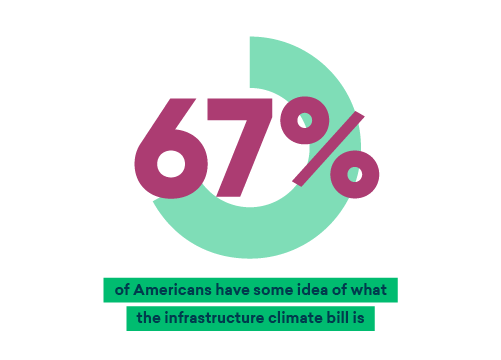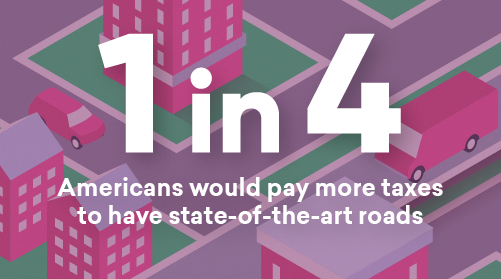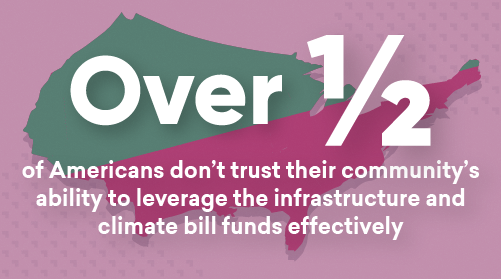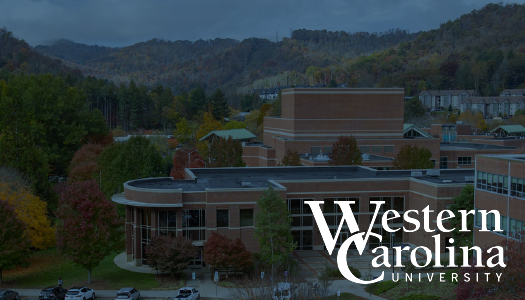New Study: How to Rebuild American Infrastructure & Public Confidence
The American Infrastructure Consumer Study reveals a lack of confidence and clarity when it comes to the upcoming infrastructure plan. How can local governments turn this around?

The American Society of Civil Engineers (ASCE) 2021 Infrastructure Report Card paints a less-than-enthusiastic picture of American infrastructure. While the nationwide C-score represents modest improvements since 2017, significant work remains to increase the score. As the White House stimulus proposal marks a watershed moment for infrastructure in the United States, we polled people across the country to evaluate their community’s infrastructure needs and priorities.
Our data reveals that the ASCE wasn’t the only party with a lack of enthusiasm. Part of the challenge is overcoming American’s ambivalent feelings towards government infrastructure initiatives and future plans.
Can America break out of the decades-long cyclical approach and make true, lasting change to infrastructure – especially at a time when the definition of infrastructure is expanding to include things like broadband and more? How can governments address this head-on? Let’s examine the results.
Key findings

Result
- Most of the public (67%) does have some idea of what the infrastructure climate bill is, but more than half of all Americans do not know or are unaware of how the bill will impact their communities.
While the majority of public does have some idea of the infrastructure bill, the findings vary widely by generation.
Almost half (41%) of Gen Z are not aware of the bill at all. Gen X is the most in-tune generation with approximately 67 percent paying attention to the proposal. And while 66 percent of baby boomers were aware of the bill, they were also the most skeptical, with 4 in 5 reporting they were unaware of how the bill would assist their communities.

Result
- More than a third of Americans believe the conditions of roads in their towns have worsened in the last five years, but only 1 in 4 would pay more taxes to have state-of-the-art roads and bridges.
Americans want modern infrastructure, but they don’t want to pay for it. While more than a third of respondents believe the conditions of roads in their towns have worsened, only 1 in 4 would pay more taxes to have state-of-the-art roads and bridges and only one third would pay more taxes to update their community’s infrastructure. In comparison, 24 percent would pay more taxes to work in a building with air conditioning.

Result
- The majority of Americans don’t trust their community’s ability to leverage the infrastructure and climate bill funds effectively.
More than half of all Americans were not sure their communities would prioritize the most important needs when infrastructure funds do become available. While baby boomers (72%) and Gen Zers (18-24) expressed the most concern, younger and older millennials (ages 25-44) were the most confident in their community. These results indicate an overall lack of trust. Governments must prioritize communicating their choices and strategies to constituents when it comes to infrastructure.
Where do we go from here?
It’s not surprising to see Americans unaware or unenthusiastic about their relationship with federal and state governments. People want modern infrastructure but aren’t willing to pay more taxes especially when they aren’t confident about their community’s priorities.
Where some see these points as challenges, we see these as opportunities. As state and local governments prepare for this incoming stimulus, strategic asset management can help leaders create a plan to optimize and take advantage of the stimulus money.
See what’s positive about the C- infrastructure rating.
Not only is strategic asset management (SAM) proven to help organizations solve short-term needs but also plan and optimize funds for the future. When applied correctly, SAM can also provide the tools, data and analysis necessary to show community members where their taxes and the federal stimulus funds are being applied.
Find actionable tips and best practices to maximize the impact of infrastructure funding.
Methodology: The American Infrastructure Consumer Study: Government polled more than 1,000 general US-based consumers over 18 years of age through the Dynata platform.




